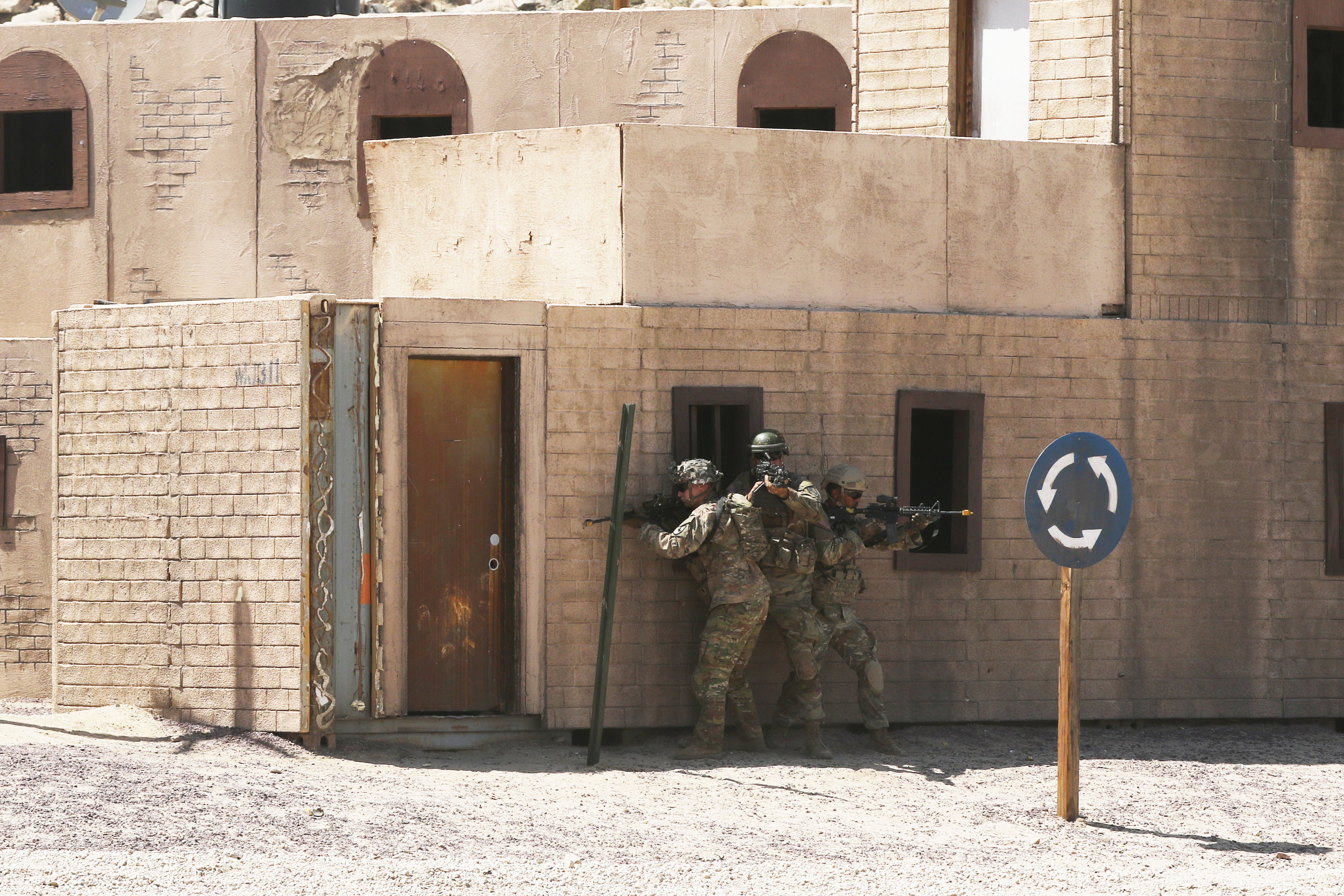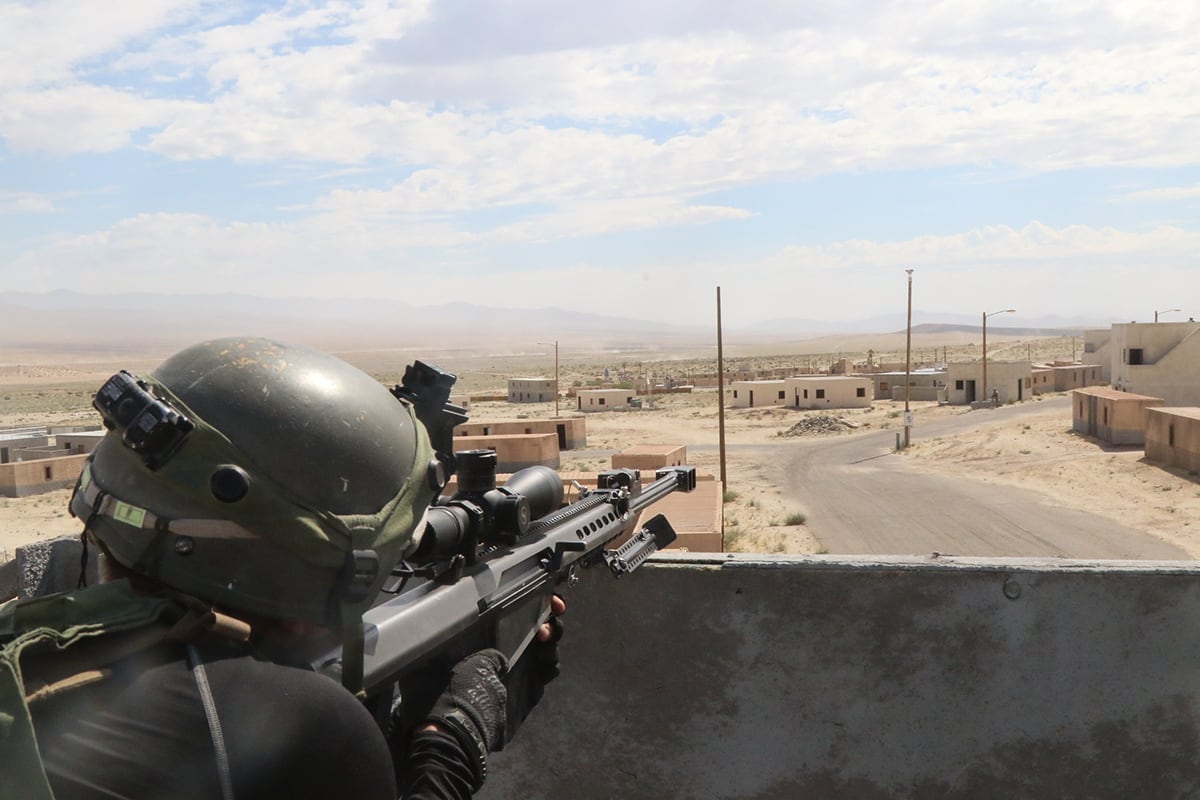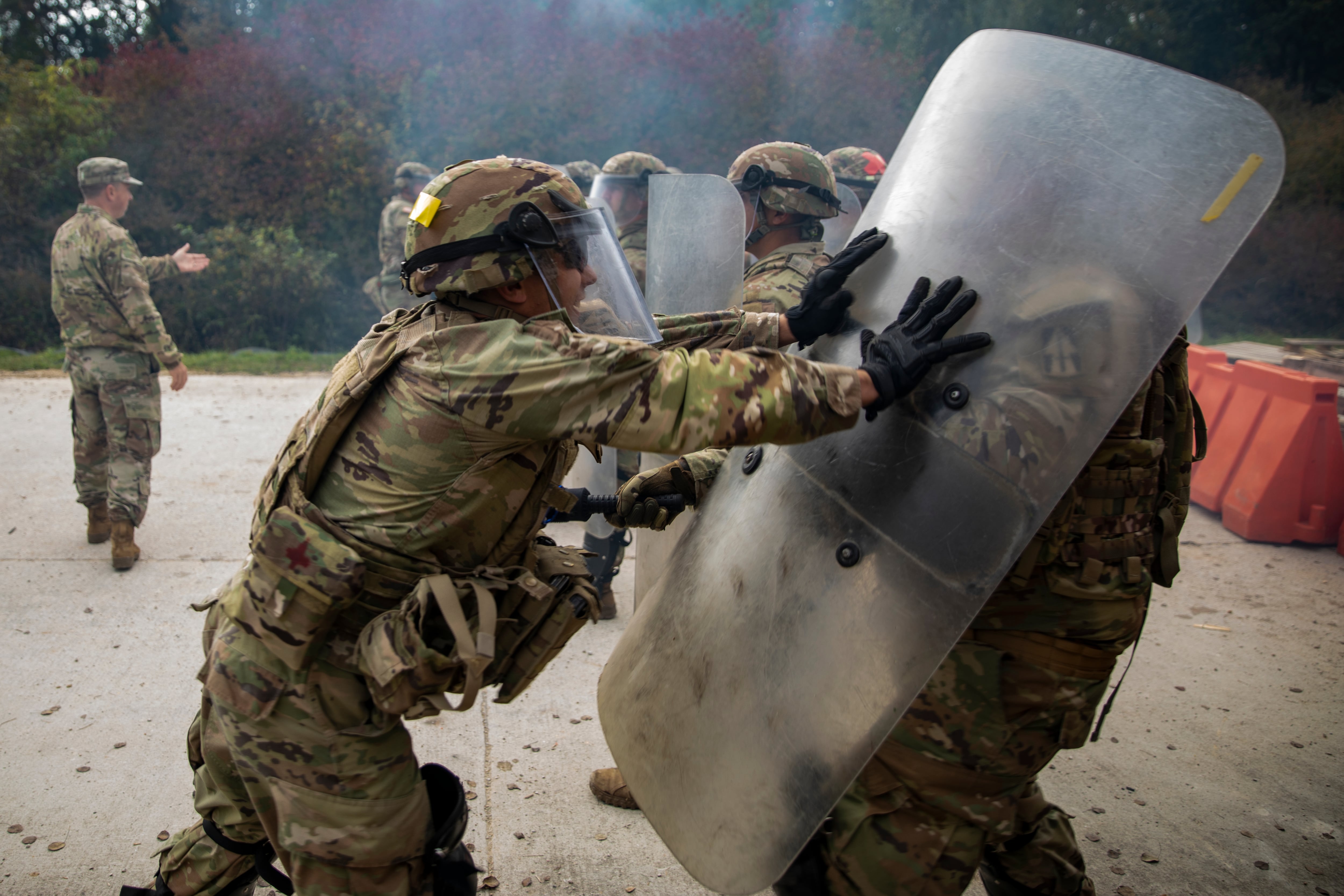WASHINGTON – Brigade commanders no longer have the luxury of time as they face the gauntlets that are combat training center rotations.
To succeed, commanders will have to see outside their immediate area and drive their units to accomplish missions on a division or corps timeline.
Brig. Gen. Curtis Taylor, commander of the National Training Center at Fort Irwin, California, laid out a recent scenario during a panel on making realistic, relevant training for large-scale combat here at the annual Association of the U.S. Army Meeting and Exposition.
In a recent rotation, 1st Armored Division, paired with a subordinate brigade combat team, saw the shift in how the brigade must operate in a future fight with a division as the main unit in the fight.
“We timed it so that the division’s river crossing was coincident with the seizure of the town of Razish,” Taylor said.

In previous counterinsurgency-focused rotations, a brigade commander might see an objective such as the simulated training town of Razish and not feel exactly right about the conditions for a rapid attack. Taylor said in past training scenarios some commanders would consider waiting six to eight hours before the assault.
But with a division on your heels, or on your flanks, a brigade commander must move fast and accomplish their tasks so that the division can orchestrate the rest of the fight.
“What we created with this scenario was the division commander…calling down to the brigade commander and saying, ‘hey, when are you going to seize that city because I’ve got to set the conditions to cross the river at the same time,” Taylor said.
The idea, Taylor said, is to get brigade commanders to think outside of their own area of responsibility and see the bigger picture. And it gives some other commanders a job to do in parallel with the brigade.
Now a division artillery commander or a cavalry commander can be part of the training, said Brig. Gen. Charles Lombardo, director of training at the office of the deputy chief of staff G-3/5/7.
But those efforts go beyond the brigade.

Lombardo stressed that operationalizing training, or making training relevant to current and future wars, requires a “culture of ownership.”
Even a single fire mission will need to touch multiple units as they coordinate moving around the battlefield to make the training realistic and worthwhile for all units involved.
“Every round fired is going to have to train every echelon possible,” Lombardo said.
Much of this is driven by both the release of Field Manual 7-0 Training last year and the recent adoption of FM 3-0 that encompasses years of study and experimentation with Multi-Domain Operations, the Army’s first major doctrinal change in 40 years.
The new training is being guided by doctrinal changes, like the adoption of Multi-Domain Operations, which involves putting together air, sea, space, cyber and electronic warfare in the same operational planning.
“Of course, there’s going to be a cascading effect across all of the institutions as we now have to operationalize this new doctrine,” said Brig. Gen. Thomas Feltey, Armor School Commandant and armor branch chief advocate.
Feltey laid out major changes in armor currently under development. Those include a pilot with III Corps at Fort Hood, Texas, to better train, certify and ensure readiness levels at the individual and crew level across the force.
At NTC, Taylor said rotating “blue force” units are also seeing a transparent battlefield where a dedicated cell within the facilities opposition force units uses low-orbiting commercially available satellites to monitor blue force movements.
They’ve also increased fires, destroyed command posts, used electronic warfare to target units emitting signatures and penetrated defenses of visitors as they were setting them up, much like what they’ll face in large-scale combat.
In some cases, by a unit’s third day training at NTC, the opposition force had locked on targets for 90% of the blue force’s locations, Taylor said.
The opposition force had nearly every noteworthy target in the blue force ranks in their sights.
And the brigade and division “nerve centers,” their tactical centers, were not safe.
“We’re going after command posts,” Taylor said.
During past counterinsurgency training, command posts faced little threat. That’s not true anymore. The opposition force is hitting them harder and more often, forcing commanders to hide those command posts and move more frequently.
In the most recent rotation, Taylor said opposition forces struck 54 command posts in nine days of training during the most recent rotation at NTC, Taylor said.
If a unit isn’t ready for combat, they don’t leave NTC until they are.
And there is no rest for the weary. A new development at NTC involves keeping units at the site until they’ve achieved a 90% operational readiness rating, Taylor said.
Brig. Gen. David Gardner, Joint Readiness Training Center commander, told the audience that staff at the combat training centers and home station must become both experts in multi-echelon training and multi-location training.
They’re using synthetic training environment tools from simulations to augmented reality, paired with live training scenarios whether at a range in Fort Bragg, North Carolina or at one of the remote, live fire-driven centers such as JRTC or NTC.
Todd South has written about crime, courts, government and the military for multiple publications since 2004 and was named a 2014 Pulitzer finalist for a co-written project on witness intimidation. Todd is a Marine veteran of the Iraq War.





